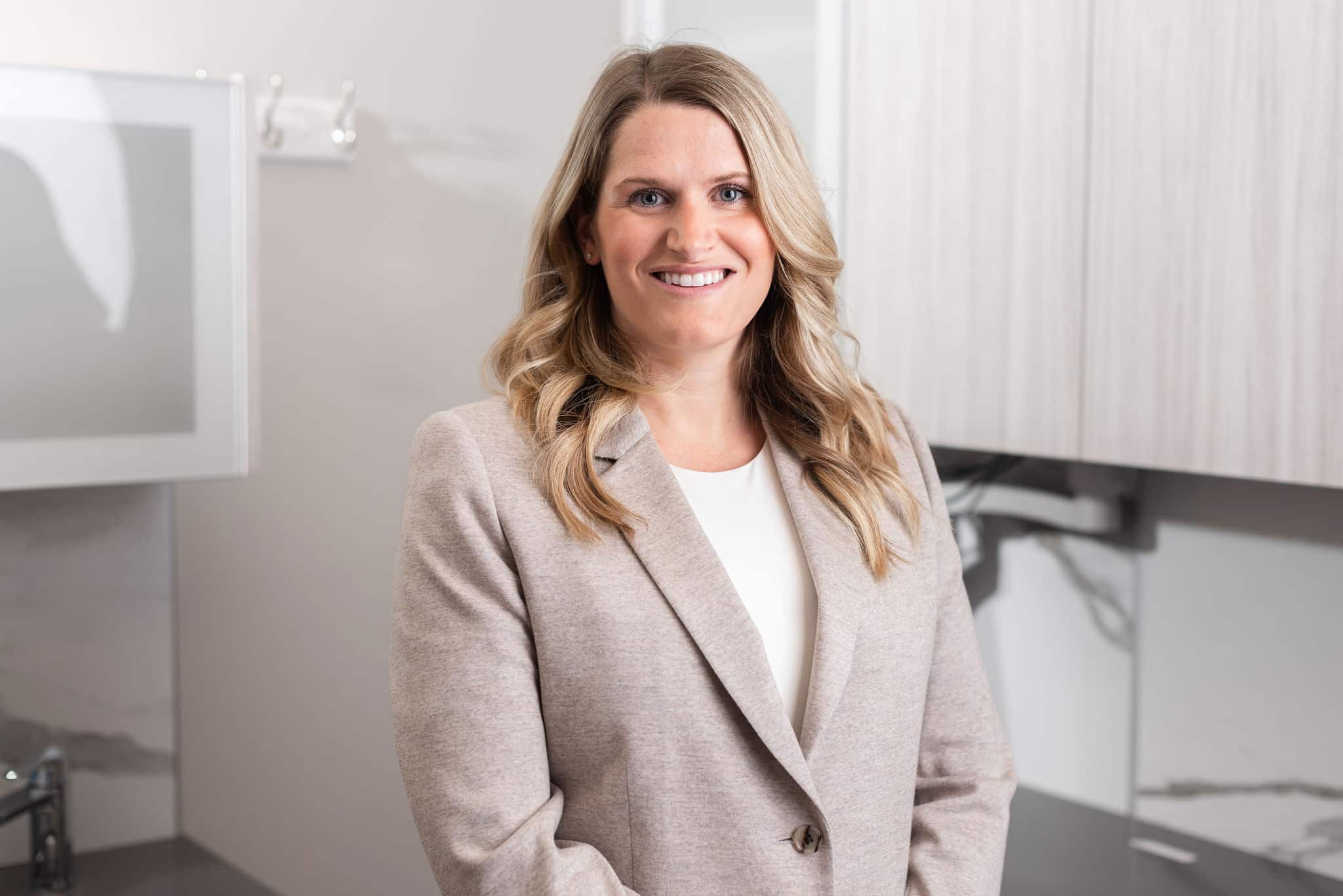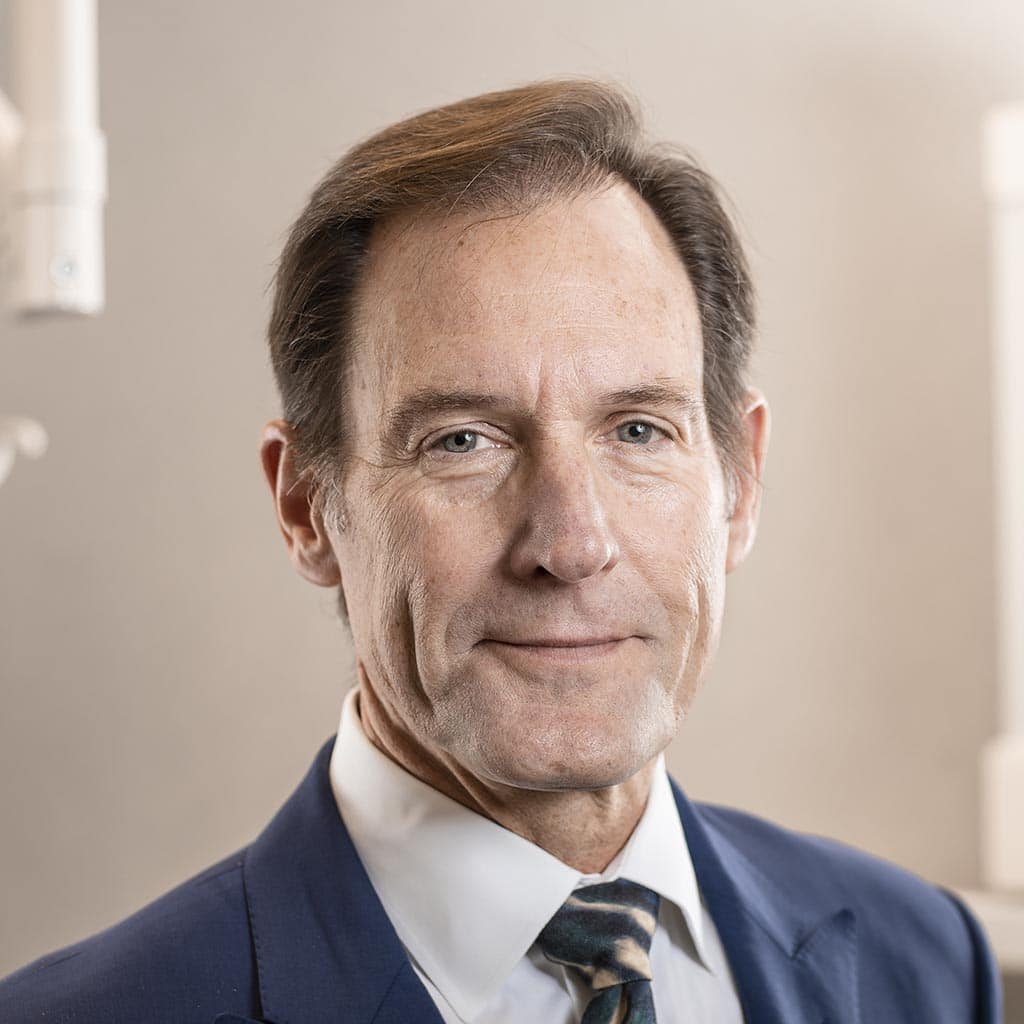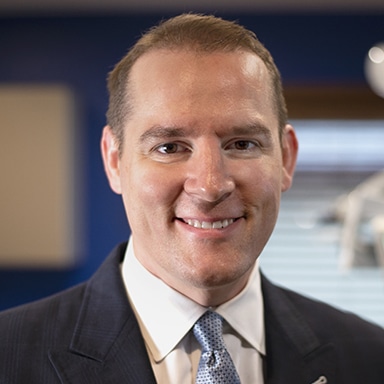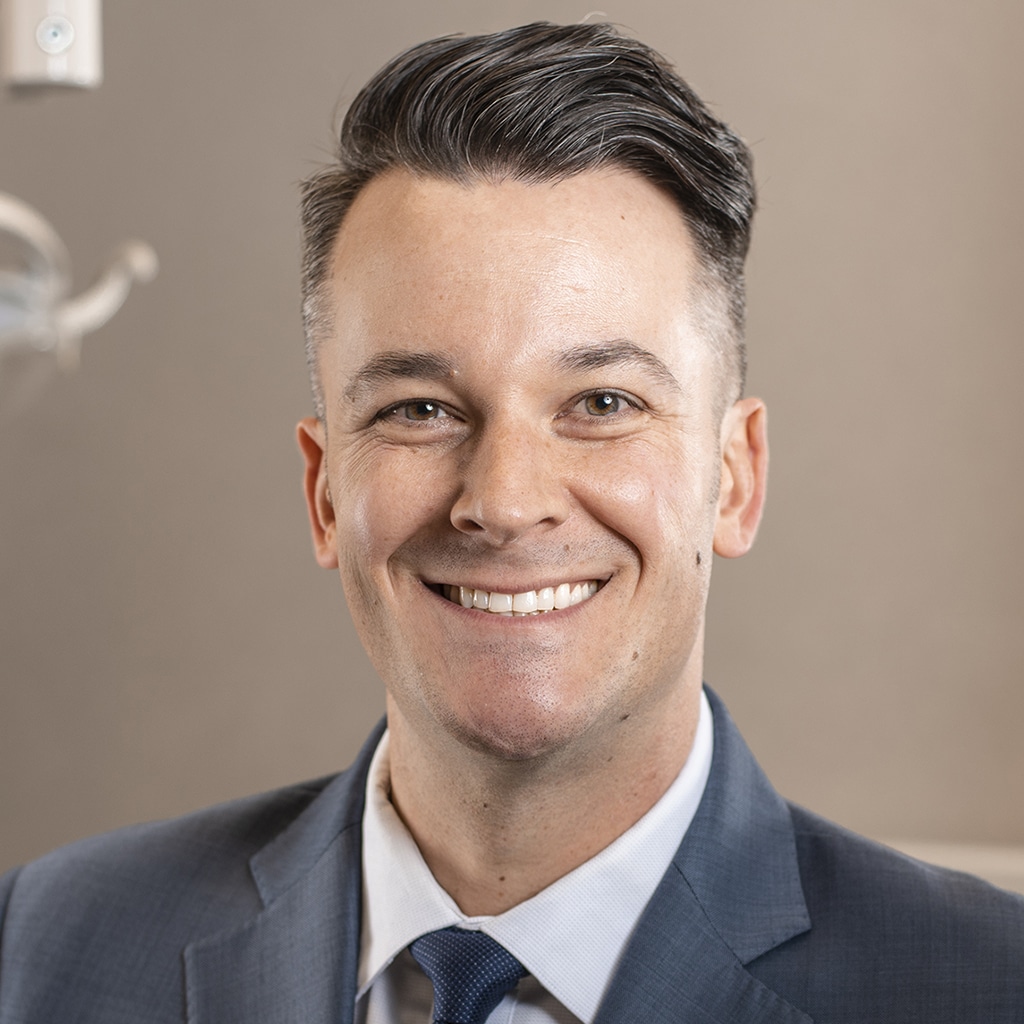FEATHERSTONE PERIODONTICS & IMPLANT DENTISTRY
committed to providing the highest quality care, supporting your efforts to enjoy the finest periodontal health
Trust Our Experience With Over 40,000 Dental Surgeries
and 12,000 Dental Implants Placed.

Featherstone Periodontics
& Implant Dentistry
Madison, Wisconsin
At Featherstone Periodontics and Implant Dentistry, we are committed to providing high-quality care and supporting your efforts to enjoy good periodontal health by identifying and correcting periodontal issues early and implementing correct and consistent oral health self-care. Although we offer a range of surgical treatment options for periodontal disease and its associated health and cosmetic impacts, our primary focus is to provide conservative treatment, avoiding surgery whenever possible.
Drawing on over 30 years of delivering high quality care to patients, our clinic proudly provides patients with comprehensive periodontal care. This care ranges from regular periodontal maintenance that will reduce your risk of developing periodontal disease and continue to enjoy good oral health, cosmetic periodontal support to provide you with a bright, full smile that you can feel confident in, and oral surgical support when more significant periodontal issues occur, such as the need for bone grafting or dental implants.
With over 40,000 dental surgeries performed and over 12,000 dental implants placed, you can be confident that you will receive high quality care, from established professionals that is designed to meet your unique needs. Our primary goal is to provide you with high quality periodontal care in a manner that makes you relaxed and comfortable.
To schedule an appointment, learn more about available services, or discuss any questions or concerns, please contact our Madison office at 5709 Odana Rd, Madison, WI 53719 or by phone at 608.416.5205
Contact our Madison, WI Location
Madison, Wisconsin
5709 Odana Rd
Madison, WI 53719
(608) 416-5205
Hours of Operation
Monday 9AM - 3PM
Tuesday Closed
Wednesday Closed
Thursday Closed
Friday Closed
Saturday Closed
Sunday Closed
DR. MARK LINDMAN
Dr. Lindman is a native of Rockford. Dr. Lindman received his professional degree of Doctor of Dental Surgery at the University of Illinois College of Dentistry. His graduate training in periodontics was completed at Northwestern University College of Dentistry Where he received a Certificate Degree in Periodontics and a Master of Science degree.
DR. JEFFERY BURCH
Dr. Burch grew up in Villa Park, IL. Dr. Burch attended Eastern Illinois University, where he majored in Biochemistry. Dr. Burch earned his Doctor of Dental Medicine degree from Southern Illinois University School of Dental Medicine. He received his Certificate Degree in Periodontics and Master of Science from Saint Louis University.
DR. BRANDON HULL
Dr. Hull grew up in Monmouth, IL. Dr. Hull earned his Doctor of Dental Medicine degree from Southern Illinois University and his Certificate in Periodontics from Saint Louis University, Department of Periodontics. While at Saint Louis University, Dr. Hull completed an anesthesia program and uses sedation and pain control techniques in his practice.
DR. KATRINE ANDREASEN
Dr. Andreasen grew up in Louisville, Kentucky and received her Bachelor of Arts in Biology from Clemson University. She attended the University of Louisville School of Dentistry to receive her Doctor of Dental Medicine degree. Dr. Andreasen continued there to complete a residency in Periodontics and earned a Master of Science in Dentistry.
DR. NOVIN PISHEVAR
Dr. Novin Pishevar grew up in Carol Stream, Illinois and received his Bachelor of Science degree in Interdisciplinary Health with a focus on aging populations from the University of Illinois Champaign-Urbana. After college, Dr. Pishevar received his dental education from the University of Pennsylvania in Philadelphia, Pennsylvania.
READ OUR REVIEWS
Discover the link to find genuine reviews about Featherstone Periodontics, highlighting their outstanding dental care and satisfied patients. Experience the quality service and patient satisfaction for yourself.
Dental Implants
Dental implants are a safe and effective treatment option for patients who have lost a tooth or teeth or for patients who are currently dissatisfied with their dentures. Dental implants provide a natural feeling and natural looking correction to the loss of teeth and will restore you back to full functionality, preserve the health of your surrounding teeth, and reduce your risk of developing additional physical or oral health issues.
Implant Supported Dentures
Many patients who have standard dentures become frustrated with their limitations, and find them to be to be unstable, inconvenient, and painful. Standard dentures also require a great deal of maintenance and can also significantly limit the types of foods patients can enjoy. Fortunately, advancements in dental technology provide patients with more effective, long-lasting solutions. Implant supported dentures are a safe and effective treatment option for patients who have lost most of their teeth and/or for patients currently dissatisfied with their dentures.
Sedation Dentistry
Sedation Dentistry is an effective method of reducing or eliminating pain during periodontal procedures and can also be an effective way to help patients who struggle with anxiety at the thought of going to the dentist (dental phobia) overcome their fears and receive the care they need to enjoy good oral health.
LANAP
LANAP (Laser Assisted New Attachment Procedure) is a tissue-preserving, regenerative treatment option that offers patients an effective and less painful alternative to traditional surgical approaches. LANAP can be used to treat a variety of issues, including removal of tissue buildup, relieving localized hemostasis, crown lengthening procedures, frenectomies, and biopsies.
Periodontal Disease
Periodontal diseases are infections that occur in the periodontal ligament, gums, and jaw bone. Periodontal disease only affects the gums in the early stages (gingivitis) but as it progresses, begins to affect all structures surrounding the teeth. In the early stages of the disease, symptoms typically include gums that are swollen, red, and/or bleed easily. As the disease progresses, patients may experience teeth that become loosened or fall out and jawbone deterioration.
Laser Gum Treatment
Laser gum treatment is the only FDA-approved treatment option that uses lasers to treat periodontal disease. Laser gum treatment has become an increasingly popular treatment option because it results in less swelling, sensitivity, bleeding, and pain, and reduces your risk of developing post-operative infections.
Cold & Canker Sores
Cold sores develop as a result of a viral infection that typically begins with a burning or tingling sensation, followed by the development of blisters that form around your mouth, most typically under your chin, around your lips, or under your nose. Canker sores are small ulcers that can develop in your mouth that typically have a yellow or white center surrounded by a red border. It is best to treat cold and canker sores as early as possible, as doing so can reduce the risk of an ulcer or blister developing.
Tooth Extraction
Although the loss or extraction of a tooth is never ideal, there are times when tooth extraction is either unavoidable or will provide the best possible outcome for your case. Teeth may need to be extracted for a variety of reasons, such as teeth that have become excessively decayed or damaged or teeth that have become infected. Tooth extraction may also be performed due to overcrowding or for patients who have hyperdontia (additional teeth than what is normal).
Wisdom Teeth Removal
Wisdom teeth are located in the back of your mouth and are typically the last teeth to develop, typically between the ages of 17-25. When patients do not have sufficient space to allow for the teeth to erupt, the tooth can become impacted. Because wisdom teeth significantly increase a patient’s risk of developing oral issues such as misalignment, tooth decay, nerve and jaw damage, pain, and infection, it is considered best practice to have them removed.
All-on-4 Dental Implants
All-on-4 is an innovative dental implant treatment that replaces missing, broken, or decayed teeth in the entire lower or upper jaw through the placement of four strategically placed posts. All-on-4 Dental Implants janesville provide a natural feeling and natural looking correction to the loss of teeth, restores functionality, preserves the health of your surrounding teeth, and reduces your risk of developing additional physical or oral health issues.
Bar Attachment Denture
Bar attachment dentures are a popular treatment option for patients who are missing most or all their teeth and/or patients who are unsatisfied with dentures. With the placement of these implants, patients can enjoy greater bone stability and begin to enjoy a bright, healthy, natural feeling and looking smile that will not increase their confidence and improve their overall oral and physical health.
Teeth in an Hour Dental Implants
Traditional dental implants have historically been a prolonged process that required multiple surgical visits and several months of treatment. Due to advancements in dental technology, this process has been rapidly sped up, and what once took several months can now be completed in just one hour. Teeth-in-an-Hour is an effective and efficient method for returning patients back to their full, healthy, natural looking smile in just one hour.
Emergency Dental Care
Emergency dental care is any type of dental care that requires immediate attention. It can sometimes be difficult to determine whether you or someone you know requires emergency dental care. Some cases, especially those including severe facial trauma, are more obvious than others. However other times, the answer is not so clear, such as when a tooth suddenly begins to ache or the loss of a filling. In general, it is better to err on the side of caution and seek emergency dental care when faced with these situations.
Mini Dental Implants
Unlike single tooth implants or traditional dental implants, mini dental implants are smaller in size, narrower, and use a screw instead of posts. There are a range of benefits associated with having mini dental implants placed, one of the biggest being that they can typically be installed in just one visit and do not typically require the use of anesthesia or sutures.
Implant Restoration
Maintaining the health of your dental implants is just as important as maintaining the health of your natural teeth. Although dental implants typically have a high success rate, there is still a possibility of issues developing. Some of the most common issues that can develop with dental implants is a crack, the implant becoming loosened, or the implant falling off. If you are concerned you may have developed issues with your dental implants, it is important to schedule an appointment as soon as possible for implant revision and correction.
Bone Grafting
Dental bone grafting is a safe and effective method for promoting the growth of bone in the jaw through the placement of grafting material over the area that has deteriorated. Once the healing process is complete, there will be enough jawbone for the dental implant to be placed. Grafting material commonly comes from a medically-processed donor or be made of synthetic material. In some cases, it is taken from the patient’s own mouth, depending on how much graft is required.
Socket Preservation
The moment a tooth is removed from this socket, the surrounding bone begins to degenerate, which eventually results in significant loss of bone material that will prevent the placement of a dental implant and cause surrounding teeth to move out of alignment. Tooth socket preservation preserves the structural integrity of your jawbone and helps patients avoid developing a dry socket.
Ridge Augmentation
A ridge augmentation involves placement of hard or soft tissue in an area of the mouth to reestablish the natural contour of the jaw by increasing gum tissue and bone. Ridge augmentation is commonly performed following the loss or extraction of a tooth and in anticipation of placing a dental implant. Increasing bone in this area increases the stability of the implant as well as the structural integrity over a long period of time.
Sinus Augmentation
Patients who require dental implants may also require a sinus augmentation to ensure that the dental implants are successful. A sinus augmentation involves the patient’s sinus membrane being moved upward to create enough space for a bone graft to be placed. Sinus augmentation is most commonly performed for patients who have lost teeth in the posterior maxilla, a substantial amount of bone in the posterior maxilla, or patients who are having multiple implants placed.
Gum Grafting
Gum grafting is a common surgical procedure that corrects recessed gums by placing a graft over the exposed tooth root surface and then grafting that tissue over the recessed area. Doing so improves the aesthetic appearance of the patient’s smile, but more importantly, reduces their risk of developing periodontal disease.
Pinhole Surgical Technique
Pinhole Surgical Technique is a less invasive alternative to gum grafting for correcting recessed gums. Rather than removing and stitching grafting material, Pinhole Surgical Technique corrects gum recession by making tiny holes (6-7 millimeters) above your gumline, through which special tools are used to reposition your gums into the proper position.
Acellular Dermal Matrix
Although grafting material has historically been taken from the patient’s palate, more and more periodontists are beginning to use acellular dermal matrix (ADM), a biologically-derived product derived from donated human tissue and medically processed. ADM has proven clinical results of providing the same level of results (if not superior) to the patient’s own tissue, while reducing procedural and post-operative pain.
Osseous Surgery
Osseous surgery is a safe and effective procedure that involves recontouring or removing bone around teeth that have become damage, reducing the depth of pockets, eliminating bacteria, and smoothing out the bone that has become damaged to allow your gum tissues to reattach. While scaling and root planing can typically correct the underlying issue, there are times when pockets have deepened so much, or when a significant enough amount of bone has been lost, that osseous surgery is necessary to ensure you do not lose your tooth.
Gingivectomy
A gingivectomy (also known as a gum lift) is a common dental procedure (typically cosmetic in nature) that is performed to create a more balanced and aesthetically pleasing smile through the reshaping of underlying bones and/or tissue in order to create a balanced ratio of gum to teeth. Unlike a crown lengthening procedure, which involves removal of bone, a gingivectomy only requires that gum tissue be removed from around the tooth or teeth.
Frenectomy
A frenectomy is a safe and effective method for correcting frenum-related issues by removing or clipping the frenum. Frenectomies are low-risk outpatient procedures that typically correct the problem after the first procedure. The two most common types of frenums that pose an issue are the maxillary labial frenum and the lingual frenum. Typically, a laser can be used, which eliminates bleeding and the need for sutures.
Guided Tissue Regeneration
When the bone, gum, and tissues that keep your teeth in place begin to break down due to periodontal disease, it is important to take steps to halt and reverse this damage from developing. Guided Tissue Regeneration (GTR) is a regenerative procedure that helps stimulate the growth of bone and tissue and is commonly used as part of the dental rehabilitation process.
Cosmetic Periodontal Surgery
Patients who feel their smile is unbalanced, unsightly, or that there is an unappealing ratio of gums to teeth may be good candidates for cosmetic periodontal surgery. Cosmetic periodontal surgery corrects cosmetic issues of the smile, most commonly by recontouring the gum line to create a better ratio of gums to teeth.
Tooth Exposure
When teeth do not naturally erupt, it may be necessary to schedule an appointment for tooth exposure, a process that facilitates the eruption of teeth and helps move teeth to their proper positions. The specific type of tooth exposure treatment will vary depending on the location of the tooth and the way it is impacted, but most treatment plans involve making space for the eruption to occur and the use of braces or other orthodontic appliances.
Periodontal Maintenance
If you have developed periodontal disease or are at an increased risk of doing so, you may benefit from scheduling regular periodontal maintenance. Regular periodontal maintenance may be scheduled every three months, depending upon the severity of your case and overall susceptibility for developing periodontal disease.
Teeth Cleaning
Teeth cleaning (also known as dental prophylaxis) is a common and effective procedure that involves a thorough cleaning of a patient’s teeth to halt the progression of periodontal disease. Periodontal disease can develop when plaque begins to buildup and harden into calculus. When the body senses this irritation and inflammation, it begins to destroy bone and gum tissue, which will cause gums to significantly recede and teeth to weaken and eventually fall out. Teeth cleaning is an effective method for preventing this from happening.
Scale & Root Planing
The most common method for treating early periodontitis is the scaling and root planing procedure. Also known as a deep cleaning, scaling and root planing is an effective method of removing calculus, plaque, and disease tissue that has accumulated in your gum pockets that cannot be removed through traditional brushing methods, and inhibiting future growth of bacteria using specialized dental instruments to smooth the surface of your tooth’s roots.
Bite Adjustment
Occlusion is the relationship or contact that occurs between your lower and upper teeth while chewing or at rest. Ideally, the arch of each of your lower and upper teeth should contact each other at the same time when you close your mouth; however, some patient’s teeth make contact before others, which is referred to as malocclusion, or incorrect or misalignment between teeth. To correct this issue, it may be necessary to schedule an appointment for a bite adjustment.
Oral Cancer Screening
In 2018, approximately 52,000 patients were diagnosed with oral cancer in the United States. Of these diagnoses, over 75% were linked to lifestyle habits, such as tobacco use or excessive consumption of alcohol. While avoiding these habits can reduce an individual’s risk, everyone is at some risk of developing oral cancer. One of the most effective methods for diagnosing oral cancer in the early stages is scheduling regular periodontal exams, during which an oral cancer screening can be performed.
Crown Lengthening
Crown lengthening is a common procedure performed to correct cosmetic issues, such as a gummy smile, or in preparation of restorative periodontal procedures, such as dental crowns. The crown lengthening or shortening procedure involves recontouring the gum line by removing small amounts of tissue in order to expose more natural tooth. By removing gum tissue and realigning your gum line, more tooth will be visible, which creates an improved balance between your teeth and gums, resulting in a healthy, full, natural-looking smile.
Gum Contouring
Patients who have an excessive amount of visible gum under their upper lip are said to have a gummy smile. Although a gummy smile does not necessarily indicate an underlying health issue, some patients are unhappy with the appearance of their smile. Fortunately, there are procedures that can be done to correct this issue, one of the most common being gum contouring.
Full Mouth Reconstruction
Patients who have lost most of their teeth or who require significant rehabilitation to restore the health and functionality of their entire set of teeth may require full mouth reconstruction. Full mouth reconstruction is a complicated, multi-step process, with every procedure and step taking into consideration the patients bite, smile, jaw joints, and facial support. The overall purpose of performing full mouth reconstruction is to improve the patient’s ability to chew, speak, and smile and restore their overall oral health and prevent similar issues from developing in the future.
Piezosurgery
Piezosurgery is a minimally invasive surgical technique that uses piezoelectric vibrations to cut targeted bone or tissue, while preserving and causing little to no damage to surrounding tissue. Unlike traditional methods of cutting bone or tissue, which often result in some loss of bone and tissue as well as bleeding, piezosurgery allows for a blood-free procedure, which in turn provides your periodontists with greater visibility, allowing for a more precise procedure.
Gum Recession
Patients whose gums have receded have either developed periodontal disease or are at an increased risk of doing so. Gum recession is typically a gradual process, with early symptoms presenting as sensitivity to stimuli, gums that bleed easily, are inflamed, and/or chronic halitosis. Eventually gums will recede so much that the tooth root becomes exposed, creating the appearance of longer teeth and increasing the risk of periodontal disease developing.
Full Mouth Dental Implants
Full mouth dental implants are a safe and effective treatment option for patients who have lost most of their teeth and/or for patients who are currently dissatisfied with their dentures. Full mouth dental implants provide a natural feeling and natural looking correction to the loss of teeth and will restore you back to full functionality, preserve the health of your surrounding teeth, and reduce your risk of developing additional physical or oral health issues.
Madison, WI General Information
Nestled in southern Wisconsin and proudly serving as the state capital, Madison, WI stands as the vibrant heart of Dane County. Madison is home to the prestigious University of Wisconsin-Madison, a world-renowned research institution. The city is known for its diverse cultural scene, with numerous art galleries, theaters, and music venues, including the Overture Center for the Arts, hosting a wide array of performances.
Madison's economy is driven by a mix of government institutions, educational facilities, and innovative technology companies. It is also a hub for healthcare and biotechnology, with the presence of prominent organizations like Epic Systems Corporation, one of the leading healthcare software companies in the world.
Outdoor enthusiasts flock to Madison, which is surrounded by beautiful lakes, including Lake Mendota, Lake Monona, and Lake Wingra. The city offers an extensive network of parks, bike trails, and nature reserves. The University of Wisconsin Arboretum, spanning over 1,200 acres, is a haven for plant and wildlife enthusiasts.
Madison's culinary scene is renowned, featuring diverse restaurants, cafes, and food markets. The city's famous Dane County Farmers' Market, held on the Capitol Square, showcases a variety of fresh produce, artisanal products, and crafts from local farmers and vendors.
With its rich cultural offerings, educational opportunities, scenic lakes, and culinary delights, Madison, Wisconsin is not just a capital city; it's a vibrant and welcoming community that offers something for everyone.
Our Madison, Wisconsin practice location is a 30 minutes drive from the following : Within a 30-minute drive of Madison, Wisconsin, there are several small cities and towns that offer a diverse range of experiences. To the west of Madison lies Middleton, a charming city renowned for its vibrant community, shopping centers, and scenic parks. Heading northeast, Sun Prairie greets visitors with its friendly atmosphere and is known for its historic downtown, local events, and community festivals. Both Middleton and Sun Prairie provide residents and visitors with a peaceful retreat from the bustling energy of Madison, making them ideal destinations for day trips or a leisurely exploration of the region.






